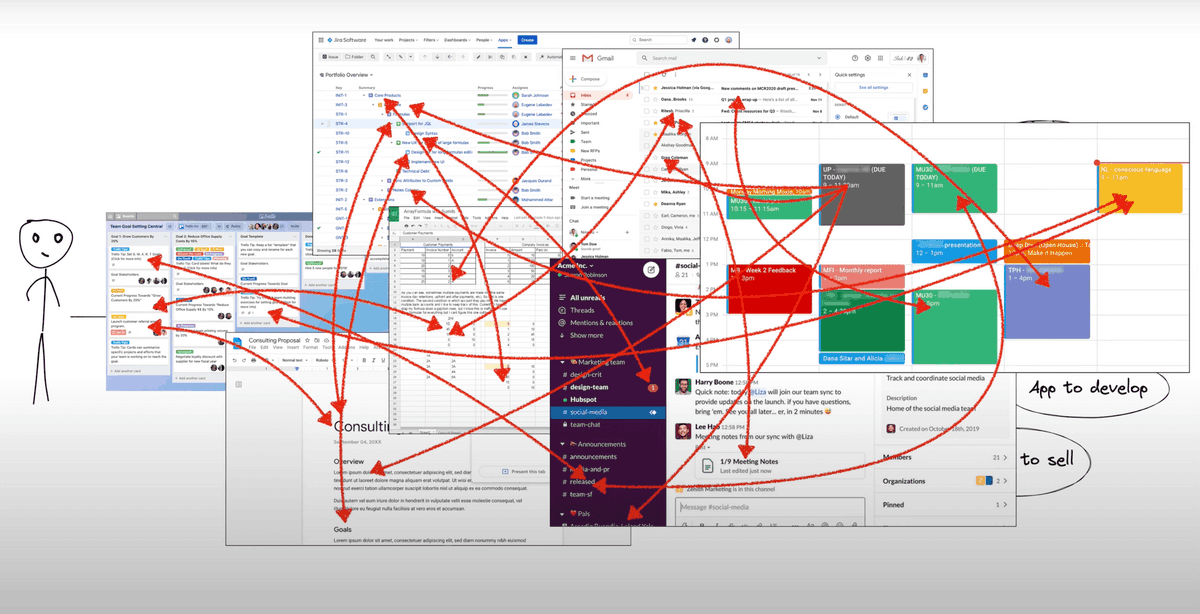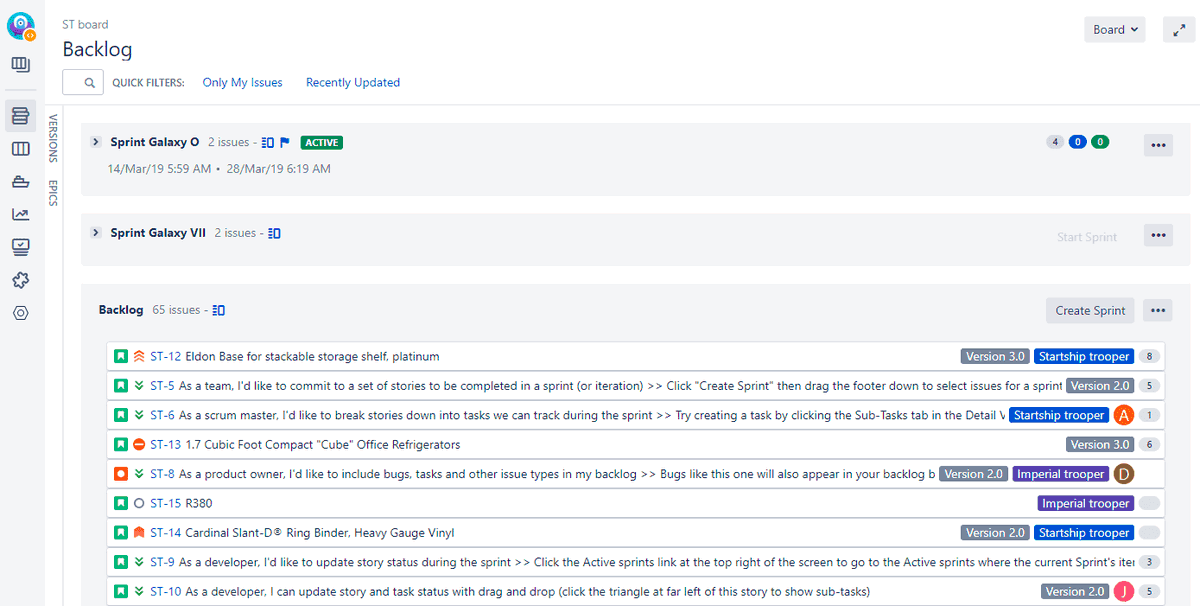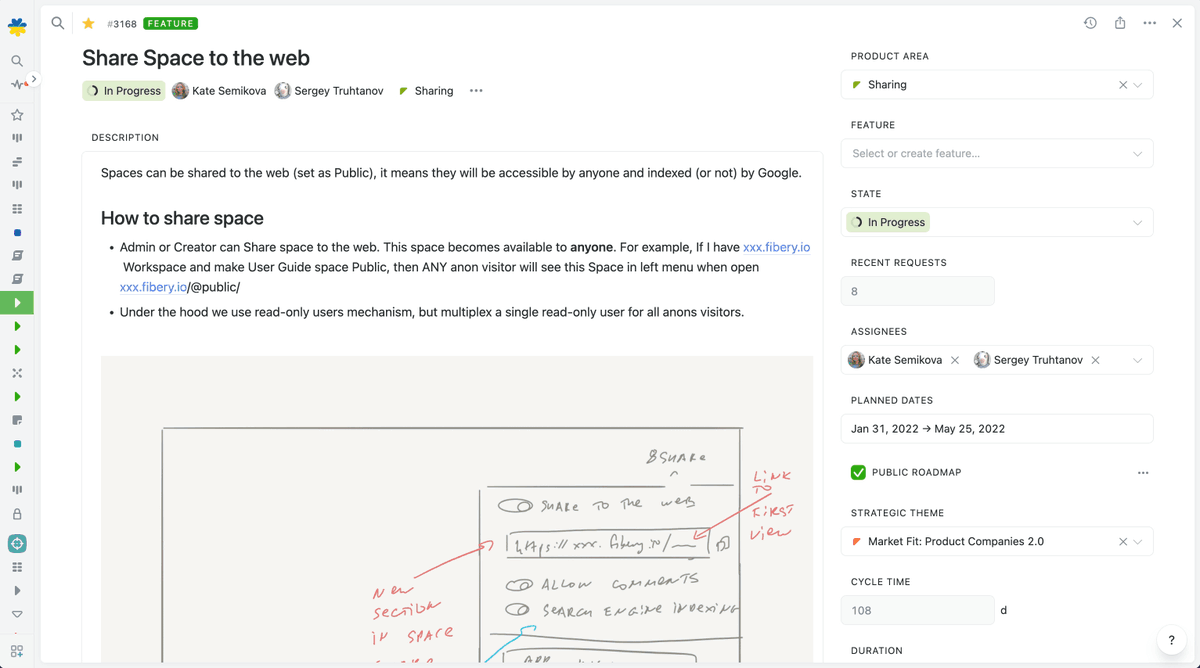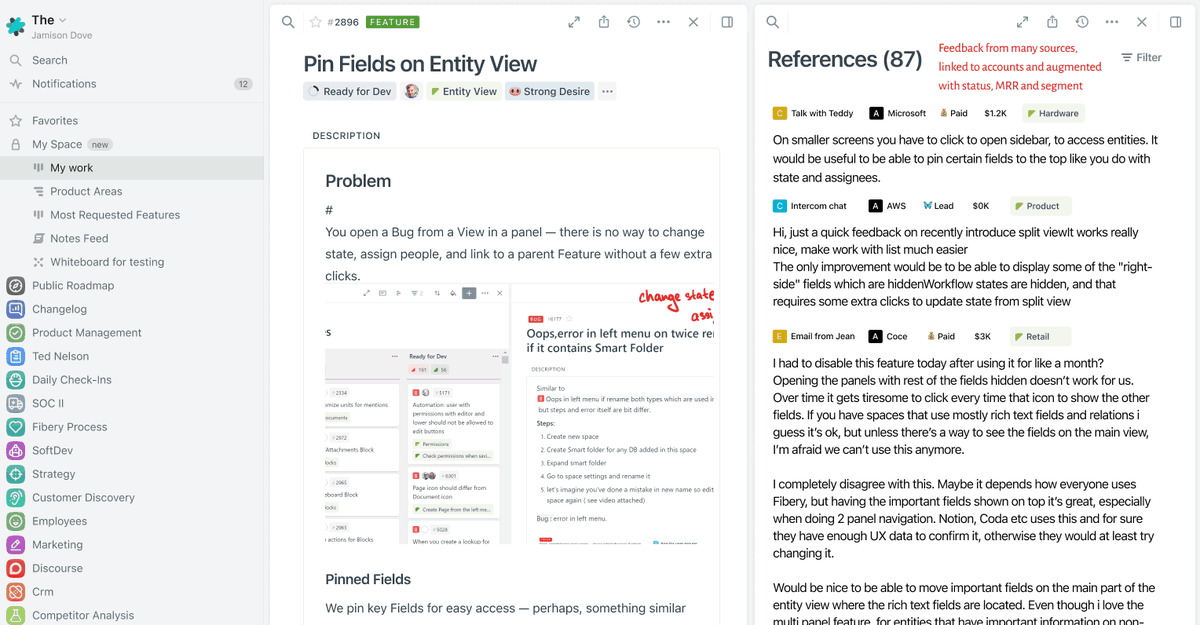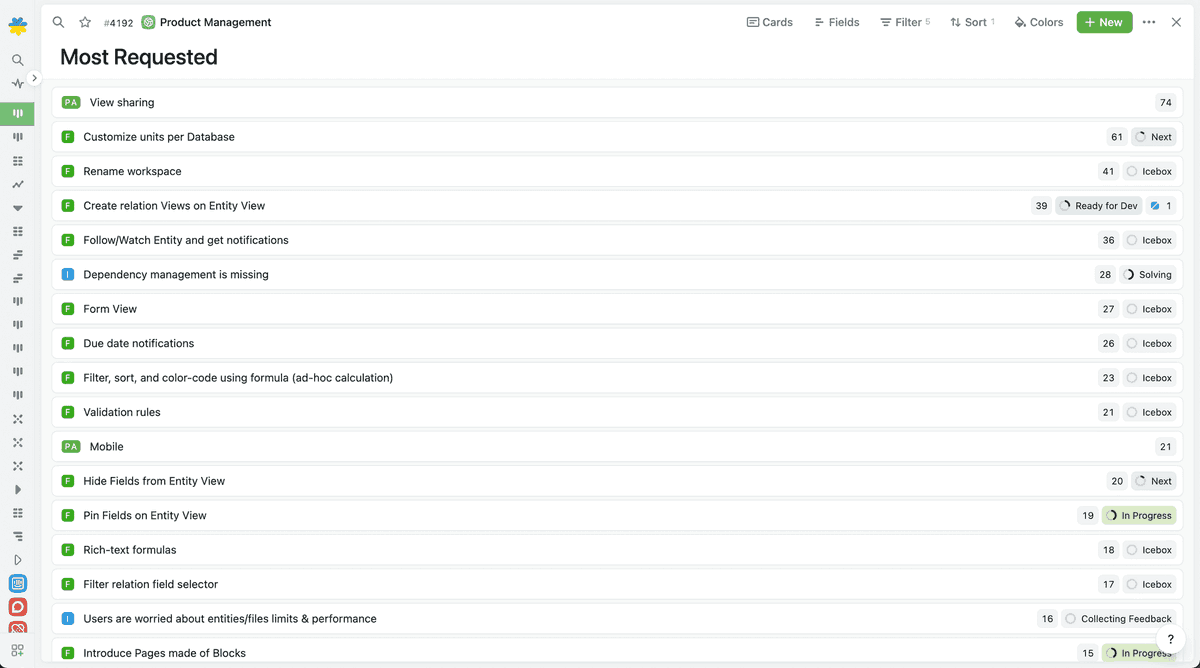Context: Product B2B SaaS startup, post-round A, 50-100 people.
Read on → ...
• Notion — company wiki & product management
• Jira/Linear — soft. dev.
• Slack — chat
• Asana — projects in marketing & non-IT teams
• Intercom — chat + user guide
• HubSpot — CRM
• Canny — feedback portal
• Miro — diagrams
/1
This product company has many problems.
Problem 1: Knowledge lives in many tools. It makes invention harder. You have to jump between tools: brainstorm in Miro → document results in Notion → have a discussion in Slack → jump back to Notion to add some ideas, etc.
/2
Problem 1: Knowledge lives in many tools. It makes invention harder. You have to jump between tools: brainstorm in Miro → document results in Notion → have a discussion in Slack → jump back to Notion to add some ideas, etc.
/2
Problem 2: Discussions are out of context.
Most discussions happen in Slack, but knowledge is hard to extract from Slack. In most cases, there are no connections to real decisions, actions, and long-term knowledge accumulators. Slack is just a short term memory.
/3
Most discussions happen in Slack, but knowledge is hard to extract from Slack. In most cases, there are no connections to real decisions, actions, and long-term knowledge accumulators. Slack is just a short term memory.
/3
Problem 3: Customers feedback handling process is poor.
Feedback comes from many places: calls, intercom chats, emails, community, but not aggregated. Product company relies on votes since there are no good tools to capture and aggregate narrative feedback and quantify it.
/4
Feedback comes from many places: calls, intercom chats, emails, community, but not aggregated. Product company relies on votes since there are no good tools to capture and aggregate narrative feedback and quantify it.
/4
Problem 4: Features prioritization process is ad-hoc.
It is not clear what Feature brings more value since feedback is not captured and not linked to a potential feature. There are some models like Kano or RICE, but they work no better than gut feelings, to be honest.
/5
It is not clear what Feature brings more value since feedback is not captured and not linked to a potential feature. There are some models like Kano or RICE, but they work no better than gut feelings, to be honest.
/5
Problem 5: Connection between features spec and features as work items is weak
Features-as-specs live in Notion and features-as-work-items live in Jira. Comments exist in both systems, but collaboration usually happens in... Slack.
/6
Features-as-specs live in Notion and features-as-work-items live in Jira. Comments exist in both systems, but collaboration usually happens in... Slack.
/6
1. External problems (market, sales, customer success) are more important.
2. Internal process changes are hard and painful.
3. This is a status quo and solutions to these problems are hard or non-existent.
/7
We don’t really know, since we don’t have solutions for them. I think a company will understand the market, customers & domain better, focus on important features, see patterns that nobody sees, save time on context switching & execute faster.
/8
Imagine you have a typewriter and write novels. Then text editors appeared and suddenly you can re-arrange text, fix typos, produce many copies of text, etc. I feel the knowledge and work management processes in companies can be much easier. This is the @fibery_io end game.
/9
/9
It is possible to build a single piece of software that will replace almost all tools from the list:
•
•
•
•
•
•
•
•
/10
Solution 1. Knowledge lives in many tools → Replace many tools with a single one.
When you have all process and knowledge-related things in a single place, information discovery becomes much easier. You just search for what you need using full-text search.
/11
When you have all process and knowledge-related things in a single place, information discovery becomes much easier. You just search for what you need using full-text search.
/11
Solution 2. Discussions are out of context → Discuss always in context.
You don’t have Slack or any external chat app. You have all conversations in Fibery. All discussions are tightly linked to process areas, knowledge hubs, or work items.
/12
You don’t have Slack or any external chat app. You have all conversations in Fibery. All discussions are tightly linked to process areas, knowledge hubs, or work items.
/12
Solution 3. Customers Feedback handling process is poor → Accumulate and connect all feedback in a single place.
When you navigate to a Feature, you see all linked feedback as text, can read it, and see related account and segments.
/13
When you navigate to a Feature, you see all linked feedback as text, can read it, and see related account and segments.
/13
Solution 4. Features prioritization process is ad-hoc → collect and use hard data to score features.
What feedback is more important? From paid accounts, target segments, larger accounts. Create a custom formula to calculate Feature importance based on strategic criteria.
/14
What feedback is more important? From paid accounts, target segments, larger accounts. Create a custom formula to calculate Feature importance based on strategic criteria.
/14
Solution 5. Connection between features spec and features as work items is weak → Remove this false dichotomy and merge them.
Knowledge and work items are not separated. Feature spec lives inside a Feature, and Feature is moved by states from development to release.
/15
Knowledge and work items are not separated. Feature spec lives inside a Feature, and Feature is moved by states from development to release.
/15
Long story short @parkerconrad nailed it:
https://twitter.com/parkerconrad/status/1297696630355816448
/16">https://twitter.com/parkercon...
Overall, it’s possible to create a product that:
- replicates 80% of any domain and UI
- has rule engine that closes all major automation cases
- has general permission schema
- mixes structured (database) and unstructured (text/diagrams) information in a good way.
/17
- replicates 80% of any domain and UI
- has rule engine that closes all major automation cases
- has general permission schema
- mixes structured (database) and unstructured (text/diagrams) information in a good way.
/17
Based on our current state of development, it seems all these problems can be solved in about 10 years timeframe for a team of 20. We spent 5 years on Fibery already and nailed the most solutions as ready things or as prototypes/concepts.
/18
In my opinion, @NotionHQ and @ClickUp are moving in this direction as well. Who is doing better?
/19
/20">https://fibery.io/blog/fibe...
/21">https://fibery.io/blog/fibe...
1. Fibery core can handle complex custom domains.
2. We already solved many hard problems and have a vision of Fibery future.
3. We are focusing on a specific niche: product companies
4. We have knowledge, cool team, and plenty of time.
/22
No matter the vendor, I’ll bet my  https://abs.twimg.com/emoji/v2/... draggable="false" alt="💰" title="Geldzak" aria-label="Emoji: Geldzak"> on this solution (well, I already did, it& #39;s @fibery_io End Game)
https://abs.twimg.com/emoji/v2/... draggable="false" alt="💰" title="Geldzak" aria-label="Emoji: Geldzak"> on this solution (well, I already did, it& #39;s @fibery_io End Game)
 https://abs.twimg.com/emoji/v2/... draggable="false" alt="🌶" title="Hete peper" aria-label="Emoji: Hete peper"> A *single* tool that unites work & knowledge management processes, thus helping product companies invent things better & build things faster. /end
https://abs.twimg.com/emoji/v2/... draggable="false" alt="🌶" title="Hete peper" aria-label="Emoji: Hete peper"> A *single* tool that unites work & knowledge management processes, thus helping product companies invent things better & build things faster. /end  https://abs.twimg.com/emoji/v2/... draggable="false" alt="😅" title="Lachend gezicht met open mond en angstzweet" aria-label="Emoji: Lachend gezicht met open mond en angstzweet"> https://fibery.io/blog/fibery-end-game-product-company-example/">https://fibery.io/blog/fibe...
https://abs.twimg.com/emoji/v2/... draggable="false" alt="😅" title="Lachend gezicht met open mond en angstzweet" aria-label="Emoji: Lachend gezicht met open mond en angstzweet"> https://fibery.io/blog/fibery-end-game-product-company-example/">https://fibery.io/blog/fibe...

 Read on Twitter
Read on Twitter